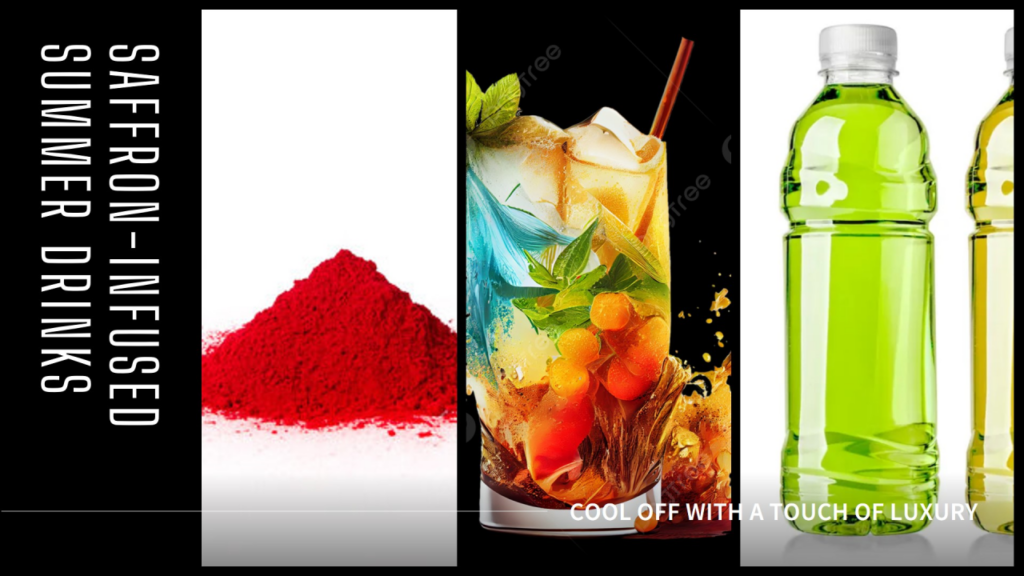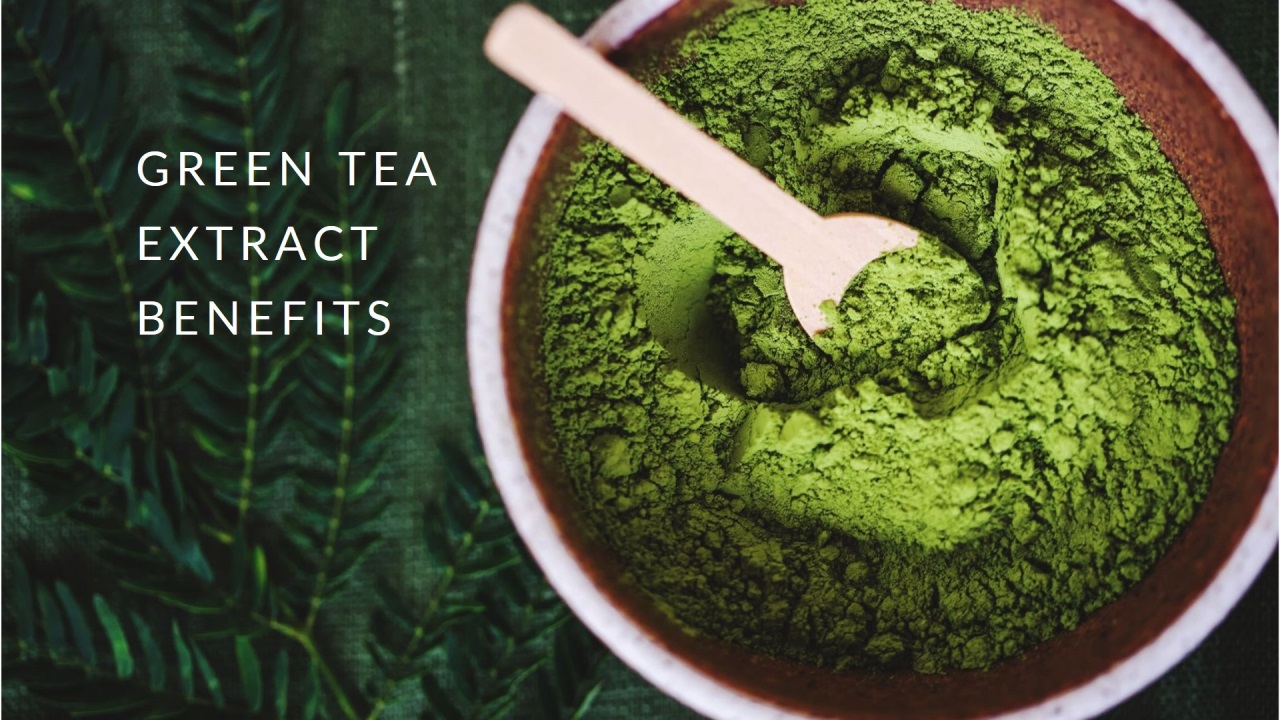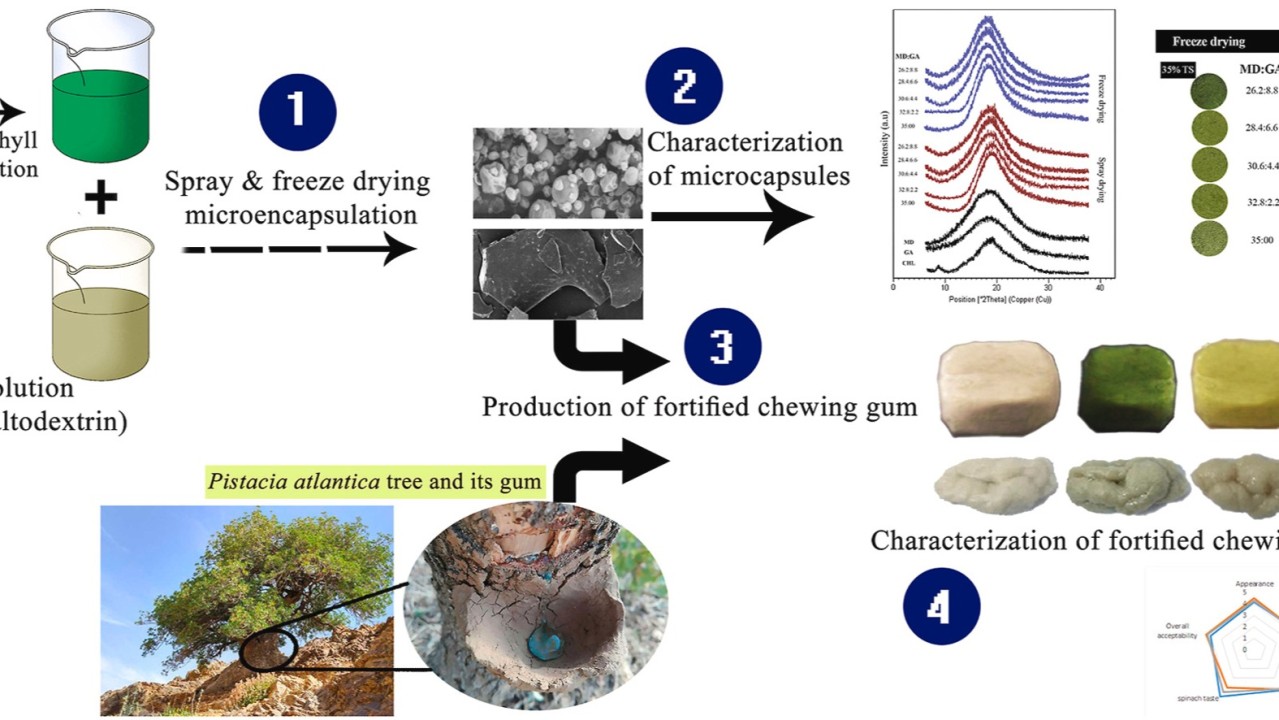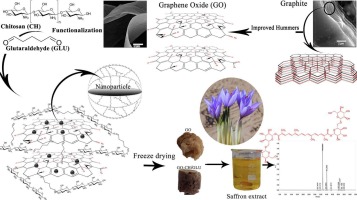Saffron, derived from the Crocus sativus flower, is a highly valued spice known for its vibrant color, unique flavor, and numerous health benefits. Traditionally used in culinary and medicinal applications, saffron’s bioactive compounds have garnered attention for their potential therapeutic effects. Recently, encapsulation and nano-encapsulation technologies have emerged as innovative methods to incorporate saffron into summer beverages, enhancing its stability, bioavailability, and efficacy.
This text explores the bioactive compounds in saffron, its therapeutic and nutraceutical profiles, encapsulation methods, and applications in summer drinks.
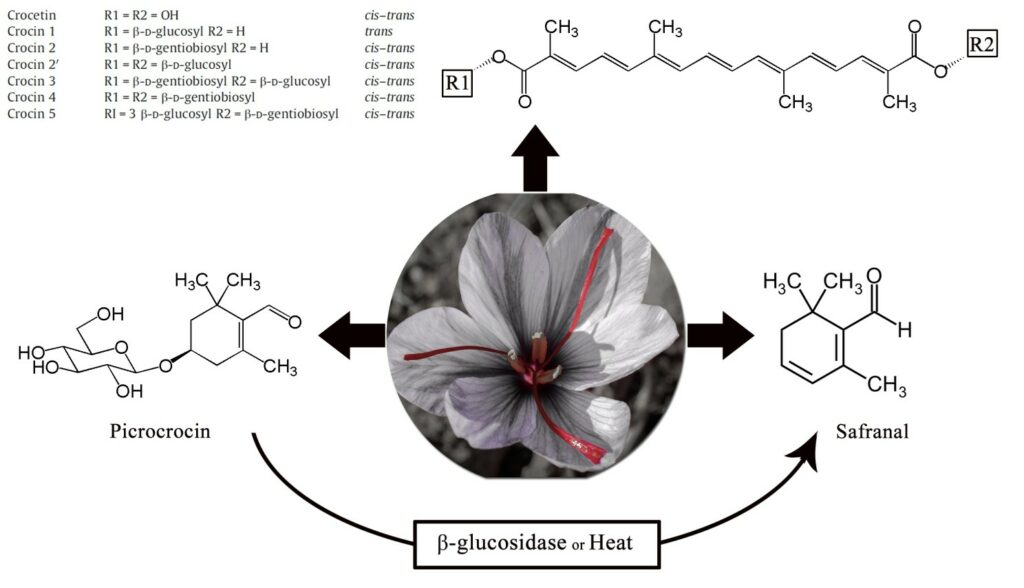
Bioactive Compounds
Saffron contains several bioactive compounds responsible for its distinct characteristics and health benefits. The primary bioactive constituents include:
1. Crocins: Water-soluble carotenoids responsible for saffron’s red color. Crocins have antioxidant properties and contribute to the spice’s antidepressant and anti-inflammatory effects.
2. Picrocrocin: A precursor of safranal, picrocrocin is responsible for saffron’s bitter taste and exhibits sedative and antioxidant properties.
3. Safranal: The volatile compound that gives saffron its characteristic aroma. Safranal has demonstrated antioxidant, anticonvulsant, and antidepressant activities.
4. Kaempferol: A flavonoid with antioxidant and anti-inflammatory properties, contributing to the overall health benefits of saffron.
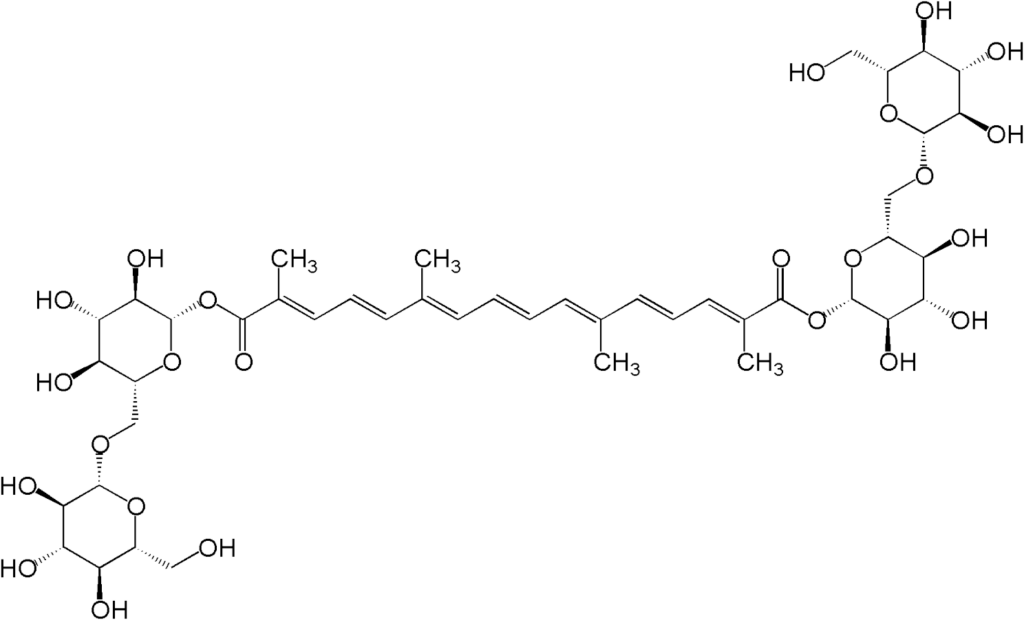
Therapeutic and Nutraceutical Profiles
Saffron’s bioactive compounds contribute to its therapeutic and nutraceutical properties, making it a valuable ingredient in functional foods and beverages. Key benefits include:
1. Antioxidant Activity: Saffron’s high antioxidant content helps neutralize free radicals, protecting cells from oxidative stress and reducing the risk of chronic diseases.
2. Mood Enhancement: Crocin and safranal have been shown to have antidepressant effects, potentially beneficial for managing mood disorders and improving overall well-being.
3. Anti-inflammatory Effects: Saffron’s bioactive compounds can reduce inflammation, which is linked to numerous chronic conditions such as arthritis and cardiovascular diseases.
4. Neuroprotective Properties: Owing to its antioxidant and anti-inflammatory actions, the spice has shown promise in protecting against neurodegenerative diseases like Alzheimer’s and Parkinson’s.
5. Anti-carcinogenic Potential: Some studies suggest that saffron may inhibit the growth of cancer cells and induce apoptosis, although more research is needed to confirm these effects.
Methods of Encapsulation
Saffron’s bioactive compounds contribute to its therapeutic and nutraceutical properties, making it a valuable ingredient in functional foods and beverages. Key benefits include:
1. Antioxidant Activity: Saffron’s high antioxidant content helps neutralize free radicals, protecting cells from oxidative stress and reducing the risk of chronic diseases.
2. Mood Enhancement: Crocin and safranal have been shown to have antidepressant effects, potentially beneficial for managing mood disorders and improving overall well-being.
3. Anti-inflammatory Effects: Saffron’s bioactive compounds can reduce inflammation, which is linked to numerous chronic conditions such as arthritis and cardiovascular diseases.
4. Neuroprotective Properties: Owing to its antioxidant and anti-inflammatory actions, the spice has shown promise in protecting against neurodegenerative diseases like Alzheimer’s and Parkinson’s.
5. Anti-carcinogenic Potential: Some studies suggest that saffron may inhibit the growth of cancer cells and induce apoptosis, although more research is needed to confirm these effects.

Applications of Encapsulated Saffron in Summer Drinks
Encapsulated saffron can be effectively incorporated into various summer beverages, providing both health benefits and unique sensory attributes. Some potential applications include:
1. Saffron-Infused Lemonade: Combining encapsulated saffron with fresh lemon juice, water, and sweeteners to create a refreshing and antioxidant-rich drink.
2. Herbal Iced Teas: Adding encapsulated saffron to iced teas made from green tea, chamomile, or hibiscus, enhances their flavor and health benefits.
3. Smoothies and Shakes: Incorporating saffron microcapsules into fruit smoothies or protein shakes, boosting their nutritional profile and offering therapeutic benefits.
4. Mocktails: Creating alcohol-free cocktails with encapsulated saffron, providing a sophisticated flavor and potential mood-enhancing properties.
5. Functional Waters: Infusing water with encapsulated saffron and other botanicals to produce hydrating beverages with added health benefits.
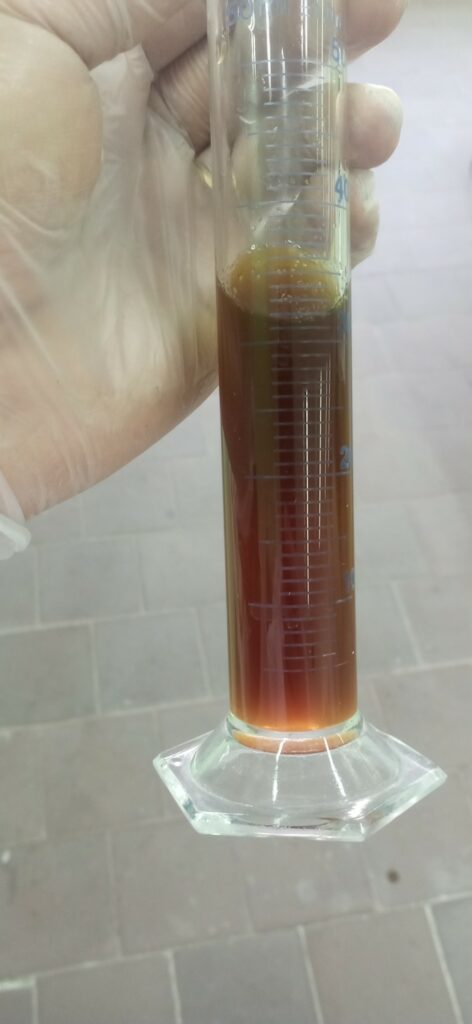
In conclusion, encapsulated saffron presents a promising avenue for enriching summer drinks with potent bioactive compounds. By enhancing stability, bioavailability, and controlled release, these encapsulation methods allow for the effective delivery of saffron’s therapeutic and nutraceutical benefits in a variety of refreshing beverages.
References
Abdullah, A. S. H., Rajion, M. A., Shahzad, M. L., & Bhatt, A. (2020). Encapsulation of Saffron (Crocus sativus L.) Extract by Nanoemulsion Using Ultrasonication Technology.** Journal of Food Science and Technology, 57(10), 3658-3666. DOI: 10.1007/s13197-020-04400-0.
Khorasani, M. T., Joorabloo, A., & Asadpour, G. (2018). Preparation and Characterization of Saffron-Loaded Chitosan Nanoparticles for Antioxidant and Anticancer Applications.** International Journal of Biological Macromolecules, 117, 930-936. DOI: 10.1016/j.ijbiomac.2018.06.120.
Ordoudi, S. A., Tsimidou, M. Z., & Zorpas, A. (2021). Encapsulation of Saffron (Crocus sativus L.) Bioactives: Techniques, Bioavailability and Applications.** Journal of Functional Foods, 84, 104662. DOI: 10.1016/j.jff.2021.104662.
Rajabi, H., Ghorbani, M., Jafari, S. M., Mahoonak, A. S., & Rajabzadeh, G. (2015). Retention of saffron bioactive components by spray drying encapsulation using maltodextrin, gum Arabic and gelatin as wall materials. Food hydrocolloids, 51, 327-337.
Rajabi, H., Jafari, S. M., Rajabzadeh, G., Sarfarazi, M., & Sedaghati, S. (2019). Chitosan-gum Arabic complex nanocarriers for encapsulation of saffron bioactive components. Colloids and Surfaces A: Physicochemical and Engineering Aspects, 578, 123644.
Jafari, S. M., Katouzian, I., Rajabi, H., & Ganje, M. (2017). Bioavailability and release of bioactive components from nanocapsules. In Nanoencapsulation technologies for the food and nutraceutical industries (pp. 494-523). Academic Press.
Jafari, S. M., Tsimidou, M. Z., Rajabi, H., & Kyriakoudi, A. (2020). Bioactive ingredients of saffron: Extraction, analysis, applications. In Saffron (pp. 261-290). Woodhead Publishing.
Vega-Gálvez, A., Plaza-Morales, S., & Vergara, J. (2015). Nanoencapsulation of Bioactive Compounds of Saffron (Crocus sativus L.) by Spray Drying: Characterization, Stability and Antioxidant Activity.** Journal of Food Processing and Preservation, 39(6), 1056-1064. DOI: 10.1111/jfpp.12336.
Jafari, S. M., & McClements, D. J. (2020). Nano-Encapsulation of Saffron: Application to Food and Beverages.** Nano-Encapsulation of Food Bioactive Ingredients, 299-320. DOI: 10.1016/B978-0-12-815670-2.00012-7.
Razavi, B. M., & Hosseinzadeh, H. (2015). Saffron: A Promising Natural Medicine in the Treatment of Metabolic Syndrome.** Journal of the Science of Food and Agriculture, 95(14), 2875-2883. DOI: 10.1002/jsfa.7343.
Melnyk, J. P., Wang, S., & Marcone, M. F. (2010). Chemical and Biological Properties of the World’s Most Expensive Spice: Saffron.** Food Research International, 43(8), 1981-1989. DOI: 10.1016/j.foodres.2010.07.033.

